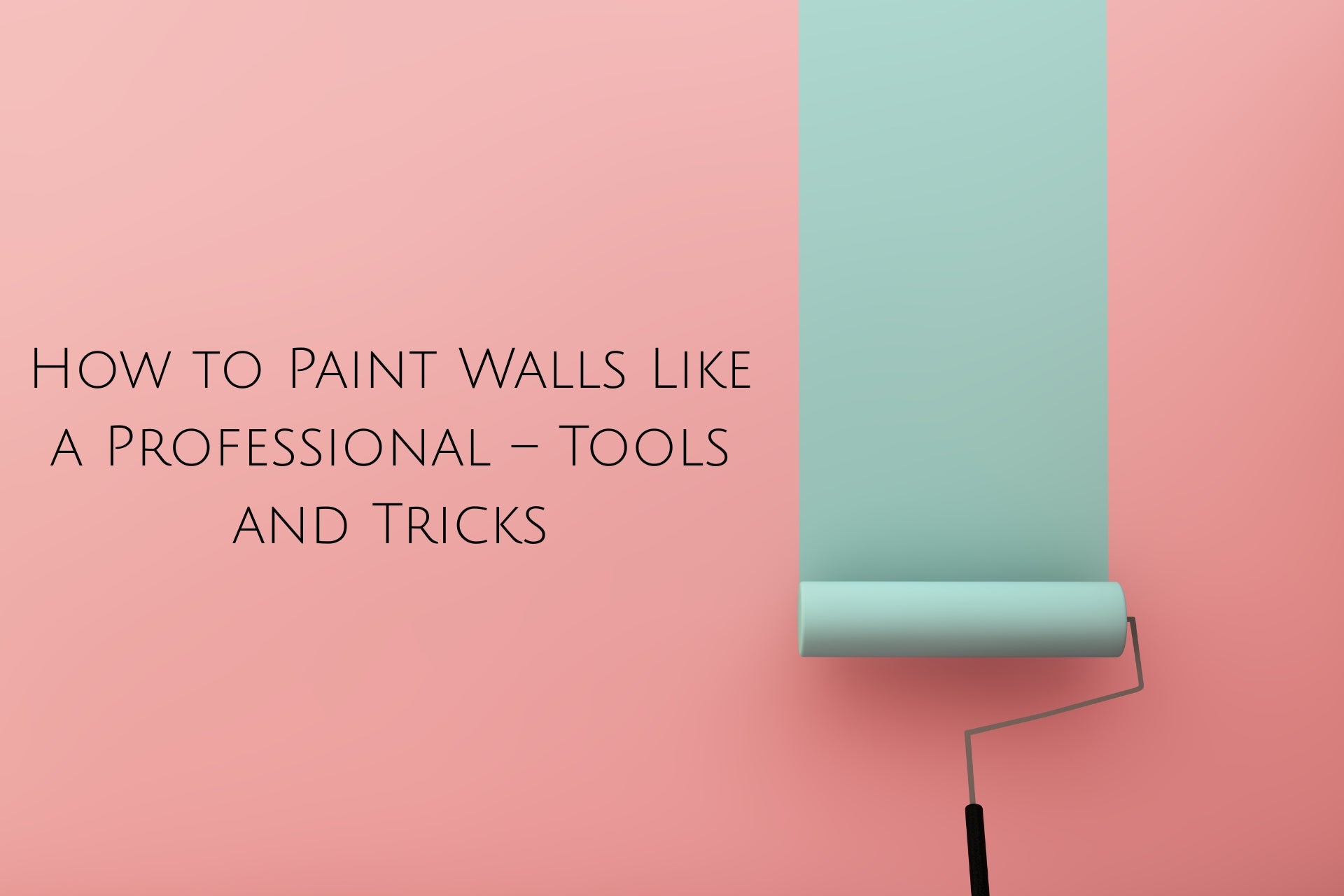Painting your walls is one of the most effective and affordable ways to transform your home. While it may look simple, achieving a professional-quality finish requires the right preparation, the right tools, and the right techniques. Many homeowners make the mistake of cutting corners with poor-quality tools or skipping steps, which leads to streaks, uneven coverage, and peeling paint.
In this guide, we will cover everything you need to know to paint walls like a professional, including a complete list of essential tools and expert tips that ensure a flawless finish.
Essential Tools for Wall Painting

Having the proper tools can make the difference between a rough, patchy wall and a smooth, professional-looking surface. Below is a complete breakdown of painting tools, their types, and their uses.
Paint Brushes

Brushes are essential for edges, corners, and detailed work.
-
Flat Brush: Suitable for painting broad areas and large surfaces.
-
Angled Brush (Sash Brush): Ideal for cutting in along ceilings, edges, and trim work.
-
Detail Brush: Small, precise brushes for fine detailing and touch-ups.
Tip: Use synthetic bristles for water-based paints and natural bristles for oil-based paints.
Paint Rollers

Rollers help cover large wall areas evenly and quickly. The nap length of the roller determines the finish:
-
¼-inch Nap: Best for smooth surfaces such as plaster and drywall.
-
⅜-inch Nap: Works well for most standard interior walls.
-
½ to ¾-inch Nap: Suitable for textured surfaces like brick or rough cement.
-
Foam Rollers: Ideal for glossy finishes and doors where a smooth look is required.
Using an extension pole with a roller makes painting faster and reduces the need for ladders.
Paint Trays and Liners

-
Standard Paint Tray: Holds paint for roller use.
-
Disposable Liners: Make cleanup easy and allow for quick color changes.
-
Bucket Grid Screen: Used inside paint buckets for loading paint evenly on a roller without excess dripping.
Painter’s Tape

Painter’s tape is essential for achieving clean, sharp edges.
-
Standard Painter’s Tape: General use for walls and trim.
-
Delicate Surface Tape: Safe for use on newly painted or sensitive surfaces.
-
Outdoor Tape: Weather-resistant and suitable for exterior painting.
Wall Preparation Tools

-
Sandpaper (80–220 grit): Smooths rough spots and removes old flakes.
-
Putty Knife: For applying wall putty or filler to cracks and holes.
-
Scraper: Helps remove peeling or old paint.
-
Wire Brush: Cleans and prepares rough walls before priming.
Drop Cloths and Protective Gear

-
Canvas Drop Cloths: Durable, reusable, and slip-resistant.
-
Plastic Sheets: Lightweight and inexpensive, ideal for covering furniture.
-
Painter’s Mask and Gloves: Protect against paint fumes, dust, and stains.
Priming and Mixing Tools

-
Primer Brushes and Rollers: Ensure better adhesion and long-lasting results.
-
Paint Stir Stick: Keeps paint well-mixed.
-
Paint Strainer: Removes lumps for a smooth finish.
-
Mixing Drill Attachment: Useful for mixing large buckets of paint evenly.
Ladders and Extension Tools

-
Step Ladder: For medium-height walls and ceilings.
-
Extension Pole: Attaches to a roller for painting high walls without climbing.
-
Telescopic Pole: Adjustable length for both short and tall areas.
Cutting and Edging Tools

-
Edging Pads: Allow neat application near trim and edges without needing tape.
-
Corner Rollers: Designed specifically for painting inside corners.
Clean-Up Tools

-
Roller Cleaner Tool: Removes excess paint from rollers.
-
Brush Comb: Keeps bristles in shape and prolongs brush life.
-
Buckets with Pour Spout: Help transfer paint without mess.
Step-by-Step Process for Professional Painting

1. Prepare the Room and Walls
Move or cover furniture with drop cloths or plastic sheets. Clean walls to remove dust, grease, or stains. Fill cracks and holes with putty, then sand smooth. Apply painter’s tape to protect trims, switches, and borders.
2. Apply Primer
Primer ensures better adhesion, hides imperfections, and makes paint last longer. It is particularly important when covering dark colors or painting on a fresh wall.
3. Cut in the Edges
Using an angled brush, paint along corners, ceilings, and edges where rollers cannot reach. This creates neat borders for rolling.
4. Use the Roller Correctly
Load the roller evenly by rolling it in a paint tray. Apply paint in a “W” or “M” pattern and then fill in the gaps. This avoids streaks and roller marks. Work in sections, keeping edges wet to blend seamlessly.
5. Apply Two Coats
For rich, even coverage, apply at least two coats. Allow the first coat to dry completely before adding the second.
6. Remove Tape Carefully
Remove painter’s tape while the paint is still slightly wet to prevent peeling.
7. Final Touch-Ups
Check for any missed areas or uneven patches and fix them with a small brush.
Professional Tricks for a Flawless Finish
Always sand the wall lightly before applying primer and paint for a smooth surface. Invest in high-quality brushes and rollers to avoid streaks and bristle shedding. Paint in natural daylight to spot missed areas easily. Overlap each section slightly to maintain a wet edge and prevent lap marks. Use painter’s tape liberally; it saves time on corrections later.
Conclusion

Painting walls like a professional is less about complicated techniques and more about preparation, quality tools, and patience. By investing in the right brushes, rollers, tapes, and preparation equipment, anyone can achieve a smooth, flawless finish. Whether you are giving your living room a new look or refreshing your entire home, these tools and tricks will help you get the best results.




